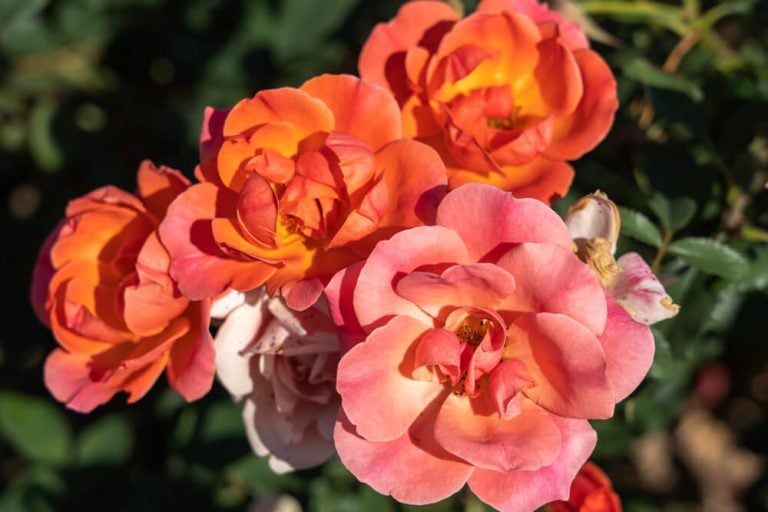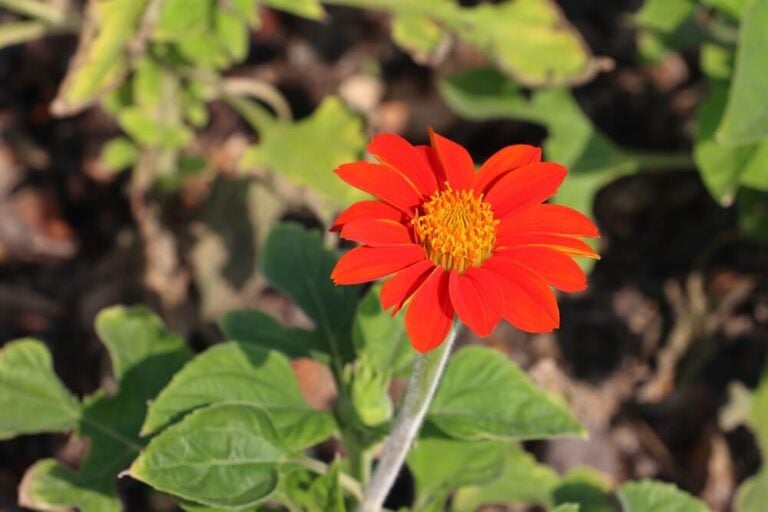Wood Chip Landscaping 101 [With Pros and Cons]
Welcome! This article contains affiliate links, meaning I get a commission if you decide to make a purchase through my links, at no extra cost to you.
If you are landscaping your garden, you may be considering using wood chips as a base layer. Before you do this, let’s find out the pros and cons of this garden landscaping material, and discover the best ways to use it!
Are Wood Chips Good for Landscaping?
Wood chips can be ideal for landscaping. There are many advantages to landscaping with wood chips. Firstly, they are a natural product – what better way to improve your land than with a natural waste product!
Secondly, wood chips are very affordable, and may even be free. If you know a local woodyard or lumberjack, they are often more than happy to get rid of some wood chips.
Alternatively, if you own some woodland, you may be able to produce your own with a good-quality wood chipper.
What Are the Best Wood Chips for Landscaping?
There are many types of wood chips available, and you need to make sure that you pick the right one for your needs.
Wood chips in large chunks will be long-lasting, whereas others such as shredded bark can rot down quickly. Others, such as cedar, have natural insect repellent qualities.
What Kind of Wood Chips Are Bad for Garden Landscaping?
If you live in a climate at high risk of fires, then certain types of wood chips should be avoided. Shredded red cedar is particularly flammable, as are pine needles.
Wood chips from black cedar will prevent seedlings from growing. Great if you want to keep weeds under control, but best avoided if you are planning on growing young plants in your wood chip landscaping!
Can You Put Wood Chips Around Plants?
A layer of wood chip around your plants can be a very aesthetically pleasing way to finish off your landscaping project.
Wood chip looks much more pleasant than bare soil, and you can have fun playing with different types and textures to create a patterned effect.
Do Wood Chips Hurt Plants?
Wood chips may take up nitrogen from the soil as it rots down. This can cause a problem for some plants, particularly any that are young or not well established.
It is not a good idea to put wood chips around newly planted perennials or shrubs. Using wood chips as mulch for a vegetable garden may also cause nitrogen deficiency in your plants.
What Plants Benefit From Wood Chips?
One great advantage to using wood chips is that they can act as a mulch, holding moisture in the ground. A layer of wood chip around the base of a young tree will prevent vital water from evaporating, as well as suppress unwanted weeds.
What Is the Difference Between Mulch and Wood Chips?
You will hear people talking about wood chips, mulch, and even wood chip mulch. But is there any difference between mulch and wood chips?
Mulch is a term used for something which is spread over your ground as a layer. Think of mulch as a top dressing for the soil, which will add nutrients and structure to the soil as well as lock in moisture and prevent erosion.
Wood chips are normally made from tree-cutting waste. A pile of wood chip may contain chopped wood, bark, twigs, and leaves. However, higher-quality wood chip is more decorative and is sometimes even colored with non-toxic dyes.
Confusingly, wood chips are also sometimes used as mulch! However, there are many other types of mulches available, such as compost, rotted manure, hay, and grass clippings.
Which Is Better, Mulch Or Wood Chips?
Which you choose to use depends entirely on how you intend to use it. For landscaping, wood chip will last longer and be more aesthetically pleasing.
Mulch is preferable if you are growing young plants and vegetables, or want to add nutrition to your soil.
What Do You Put Under Wood Chips?
The great thing about landscaping with wood chips is that they work best with nothing underneath them!
Some people suggest using landscaping fabric to suppress weeds, but a thick layer of wood chip will do this anyway. Even the highest quality landscaping fabric will degrade over time, and you would have to scrape off all the woodchip to replace it.
For the best results, put down a generous layer of wood chip right from the start. A 4-inch deep layer will compact to about 3 inches when walked on. This should last for at least three years and then will just need topping up with another inch or so of wood chip.
Do Wood Chips Attract Termites?
You will hear many people say that wood chip landscaping attracts termites, but is this true? It is correct that you can find termites in areas that have been landscaped with wood chips, but it is not the wood chips themselves that attract them.
Termites love the environment that wood chip mulch creates, but they would need to already be in the area to colonize your wood chip. They don’t ‘sniff out’ wood chip, but may come across it by accident!
Termites are equally as fond of living in mulches, bark, and even gravel. This is because they are easier to travel through than hard, compacted soil. To avoid termites moving into your home, it is a good idea to avoid using loose surface material on a 24-inch strip around buildings.
What Can I Use Instead of Wood Chips for Landscaping?
If you have decided that wood chip is not right for your garden project, here are some other great landscaping materials:
Gravel
Gravel, rocks, and stones may have a high initial cost, but they will last far longer than wood chip. You can also vary the types and sizes of stones to create some incredible landscaping effects.
Shredded bark
Shredded bark is often cheaper than woodchip, and can create a soft landscaped surface, similar to a woodland floor. However, it will degrade quickly and need topping up regularly.
Rubber chips
Rubber chips are made from recycled tires and create a long-lasting landscaped surface. It acts as a good weed barrier and helps to hold moisture in the soil.
Conclusion
Will you be using wood chip in your landscaping? Are you going to chip wood yourself? Let us know in the comments!








Hi Kate! I’ve ordered a ChipDrop for the first time. This is a service provided for free through a website org which coordinates local arborists with homeowners wanting free chips. They deliver unannounced, up to 20 yards, and you “get what you get”! Nerve wracking, yes. Yet I’m excited to cover some muddy weedy patches in a shady part of the property. Concerned that my little critters (worms, slugs, squirrels, songbirds) could suffer, living or eating, underneath that thick layer of organic stuff. Good luck with your quinta! Sounds divine.
Wow, that sounds like a great service! I suppose 20 yards might be a little much for most people, but most of us wouldn’t say no to a load of chip 😀 You’ll find that most small critters love wood chip! If you use it in your garden, just keep an eye on the nitrogen levels. Wood chip breaking down can cause a nitrogen deficiency 🙂
Let us know how much you got!
Isn’t it only bad if you mix it in with the soil as opposed to using it as a cover? I’ve seen some people use news paper underneath. I do try to follow the back to Eden gardening method though.
Hi Kimberley!
No, I don’t think it matters much whether you mix it in or put it on top – either way, the organisms will try to break it down, resulting in nitrogen rob. You can combat it by adding a layer of high-quality compost of manure (something with enough nutrient to even things out) between the soil and the mulch. This is quite a good video about this method, which he calls “manure sandwich” – https://www.abc.net.au/gardening/factsheets/combating-nitrogen-drawdown/9429488?jwsource=cl
Whilst newspaper is great at covering the soil and keeping weeds down, I don’t think it would prevent nitrogen draw-down. Once the newspaper is composted, the organisms will move on to the wood chip, resulting in the same issue. Newspaper is particularly low in nitrogen so wouldn’t combat the loss of nitrogen. This study found that there are, in fact, extremely low levels of nutrients in newspaper (nitrogen was at 0.11%!).
Again, you can remedy this with the above-mentioned manure sandwich 😀
That said, opinions always vary and I find that gardening is an experimental business – some people swear by certain routines and others by completely different methods 🙂
The Back to Eden method sounds fantastic – I’m going to look into it more! (And, if anyone is interested in an article about this method, let us know!)
Hope that helps!
Ha, to prove the fact that there are many, many different opinions, here is an interesting article that believes wood chips are a great mulch for certain situations. It’s a good read 🙂